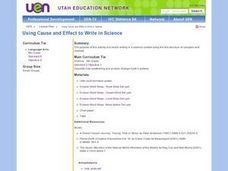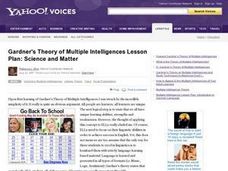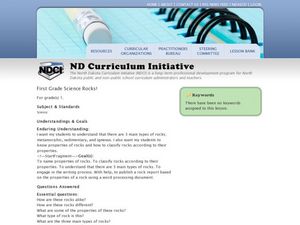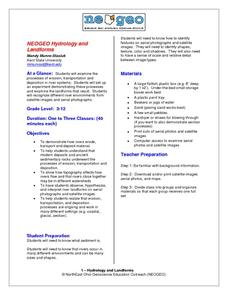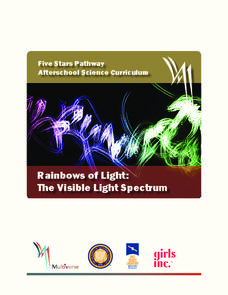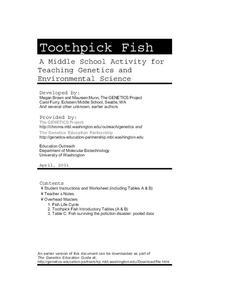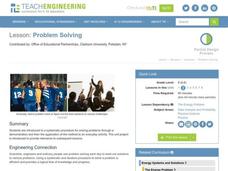Curated OER
Forest Habitat Fragmentation
Seventh graders discuss the loss of animal habitats and the importance of refuge areas for them. They collect small pictures of animals found in their state and glue them to an outline of their state according to their range. Finally,...
Curated OER
Bringing Animal Issues Into the Classroom
An informative activity invites learners to compose essays about animals. Some excellent writing prompts are included in this innovative activity. Use these ideas with a variety of grade levels.
Constitutional Rights Foundation
Ellis Island—The “Golden Door” to America
Are you one of the 100 million Americans whose ancestors passed through the doors of Ellis Island? Learn about the historic entry point for immigrants in the late 19th and early 20th centuries with an informative reading passage. After...
Curated OER
Using Cause and Effect to Write in Science
Fifth graders brainstorm processes or forces that cause Earth's surface to be changed.
Curated OER
Trait Variations for Survival
Young learners examine how different traits could give one organism an advantage over another. In groups, they view two different organisms in different environments. To end the lesson, they complete a Venn Diagram on the two organisms...
Curated OER
The Science of Swinging
Learners learn how a pendulum works in the concept of an amusement park ride. In this pendulum lesson, students are introduced to Newton's first law of motion and how it works in an amusement park ride. Continuous motion and inertia are...
Curated OER
Science Experiments - The Low-down
Third graders discover the process thinking about science experiments, and why they are important. They work in small groups using incline planes and a small toy car to design one scientific question that can be answered through...
Curated OER
PATTERNS IN TIME
Students build a realistic sense of geological time, seek clues of transition fossils and find them. In this investigative lesson students complete several activities and worksheets on fossils.
Curated OER
Science and Matter: Multiple Intelligences
Students complete presentations of their understanding of the concept of matter in many different forms. In this matter lesson plan, students use whatever multiple intelligence they feel strongest in to present their presentation.
Curated OER
First Grade Science Rocks!
First graders examine rocks. In this rock lesson plan, 1st graders look at the properties of rocks and classify them. They discover the three types of rocks: sedimentary, metamorphic, and igneous.
Eisenhower Regioanl Consortium for Mathematics and Science Education
Lesson 10: Integer Addition and Subtraction (for the TI-73 only)
Using a number line on the floor made from masking tape and manipulatives, learners observe a demonstration of the addition and subtraction processes. After completing several worksheets, they solve three-term problems using calculators...
Curated OER
"Intelligent Design" and Ohio's Science Curriculum
Students explore the debate between intelligent design and Darwinism. They research both topics by accessing primary sources. Students interview school administrators to determine what its science curriculum is and the timeline for any...
University of Southern California
Wave Erosion Lab
Using a stream table, erosion enthusiasts examine how the density of sediment and how the slope of land contribute to the amount moved by waves. You will not be able to use this entire resource as is; there are teachers' names and...
Curated OER
Lesson 2 Ordering Numbers
Math wizards begin the lesson plan by comparing and ordering rational numbers. Using a number line, they discover the relationship between the numbers and practice ordering them in the correct way. They also review proper techniques for...
NorthEast Ohio Geoscience Education Outreach
Hydrology and Landforms
Three days of erosion exploration await your elementary geologists. Learners begin by examining rivers via Google Earth, then they model water flow in sand, and finally, they identify resulting landforms. This lesson is written...
Multiverse
Rainbows of Light: The Visible Light Spectrum
Rainbows can teach us about the visible light spectrum. Learners observe multiple items that clearly display a rainbow to develop better connections. The lesson then explains wavelength using a rope to make waves.
University of Washington
Toothpick Fish
With colored toothpicks representing genes, youngsters practice passing them through generations of fish and learn about heredity. Consider this as an introductory activity since it does not represent recessive genes with lowercase...
Curated OER
What is in Second-Hand Cigarette Smoke?
Middle schoolers discuss the chemicals found in second hand cigarette smoke. In this second hand smoke activity, students observe a demonstration of a smoke analyzer. Middle schoolers research the chemicals found in second hand smoke and...
Curated OER
Look for Patterns: Quilts in Two Faith Ringgold Stories
Author Faith Ringgold uses quilts to illustrate her books Tar Beach and Aunt Harriet's Underground Railroad. In this integrated trio of activities, young scholars read stories, identify and create patterns, and design quilt squares of...
Institute of Electrical and Electronics Engineers
Solar Structures
It's time to soak up the sun! Youngsters read about active and passive solar heating systems, then they collaborate to create a miniature solar-heated building. Provide a variety of materials for them to incorporate and watch their...
Curated OER
Taking the Boat to Manaus
Fifth graders apply the concepts they know regarding mass, volume and density in the previous activities to design a boat. Student teams must make a boat which can travel the waters of the Amazon Rainforest. Each group makes a...
Teach Engineering
Clean it Up!
Harness the power of bacteria. Scholars see how using organisms that exist in nature can help solve human problems in the process known as bioremediation. They research and discuss several successful examples, such as using oil-eating...
Teach Engineering
Problem Solving
Need a activity? Problem solved. Scholars learn about the problem-solving process in the sixth installment of a 25-part Energy Systems and Solutions unit. The particular process in question is the Technological Method of Problem Solving.
Teach Engineering
The Cloning of Cells
Did you know that there are over 200 different types of cells in the human body? One type, the stem cell, is the focus of the fifth of six installments in the Cells unit. The lesson asks the class to discuss stem cells and their...



